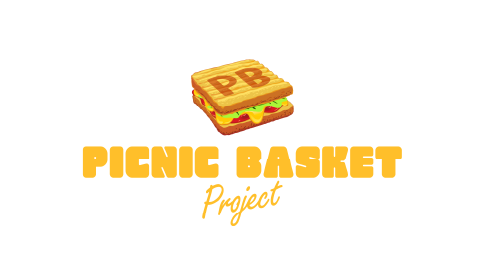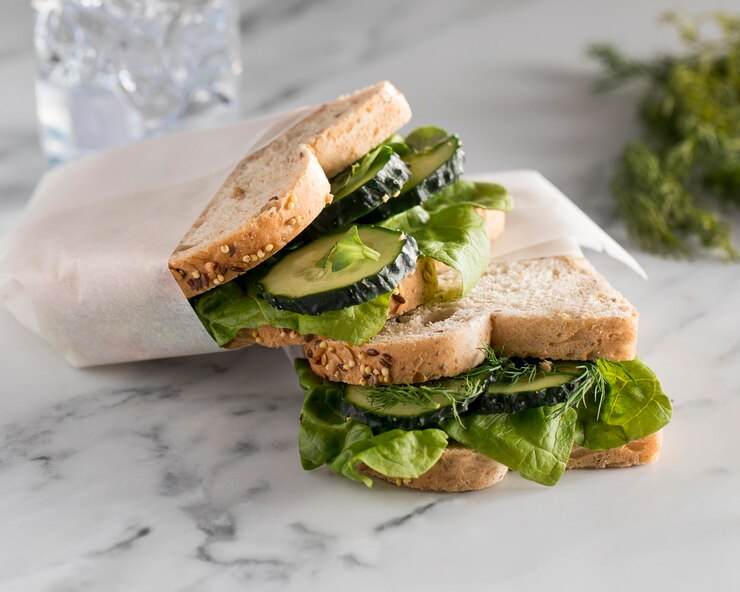It’s not just about looking green anymore – it’s about creating practical, sustainable solutions
Have you ever considered the environmental impact of your favorite sandwich? The UAE has one of the highest rates of per capita waste generation globally. A staggering 38% of food prepared in the emirate is wasted daily, a number that climbs to 60% during Ramadan. This makes the journey of our food, even something as simple as a sandwich, a critical issue to examine. In this blog we will discuss how we can contribute towards sustainable sandwiches in Dubai.
Carbon footprint of the sandwiches
The Ingredients’ Footprint
Every component of your sandwich has a carbon footprint. From the wheat fields where the bread begins, to the dairy farms producing cheese, to the vegetable farms, each ingredient goes through a complex supply chain, often spanning countries or even continents. This travel, especially refrigerated transport, contributes significantly to energy consumption and emissions.
The Packaging Problem
Packaging presents another major challenge. Most sandwiches are wrapped in plastic, often accompanied by additional cardboard or paper. While these materials preserve freshness and safety, they contribute to the growing waste problem.
The Perishable Nature
Sandwiches don’t stay fresh for long, and it’s hard to know exactly how many people will buy them each day. If too many are made, extra sandwiches often get thrown away. When they rot in landfills, they release methane, a gas that harms the environment.
Energy Consumption:
Refrigerated storage, preparation areas, and equipment operate around the clock. Commercial refrigerators, slicing machines, and lighting all contribute to the energy footprint.
Transportation’s Impact
Distribution networks that deliver fresh sandwiches to stores, cafes, and vending machines demands more energy usage. Delivery vehicles, particularly those requiring refrigeration, leave a significant carbon trail.
Working Towards Solutions
The food industry is actively addressing these challenges, from sourcing local ingredients to implementing smart energy management systems. It’s a collective effort, and every small step counts.
Innovative solutions in Packaging Industry for sustainable sandwiches
Dubai is taking environmental impact seriously, and the packaging industry is responding with innovative solutions. This focus extends to food, with a growing emphasis on sustainable sandwiches in Dubai. The packaging industry is undergoing a green revolution, moving away from traditional plastics towards sustainable alternatives. Lets see some of the alternatives.
Biodegradable Alternatives:
Traditional plastic containers, which linger in landfills for extended periods, are being replaced with biodegradable materials like cornstarch and mushroom roots. These decompose naturally, similar to food scraps in a compost bin, leaving no harmful residue. Remember those plastic containers you get alongside your online delivery? These end in landfills. Companies are now replacing them with materials that break down naturally leaving no toxic residue behind.
Recycled waste
The push to reduce plastic waste has led to a surge in the use of paper-based packaging, made from recycled materials. Recycled paperboard and other similar materials are becoming increasingly popular for packaging a wide range of products, from everyday groceries to convenient options like a sandwich party box. By choosing products packaged in recycled paper, consumers can actively contribute to reducing plastic pollution and conserving natural resources.
Smart Packaging
Smart containers are revolutionizing how we think about food freshness. Beyond a simple printed expiration date, some now feature indicators that change color based on the actual freshness of the contents. This helps consumers reduce food waste and save money by providing a more accurate assessment of when food is truly going bad. For example, some packages, including those designed for fresh sandwiches, come with special indicators that change color, letting you know exactly when your sandwich is at its peak freshness. This technology ensures you enjoy fresh sandwiches . Want a quick bite of the best mini sandwiches in Dubai visit our sandwich shop in al Wasl port.
Clear Disposal Instructions
Companies are improving disposal instructions, moving beyond simple symbols to include detailed explanations and QR codes linking to recycling guides. Of course, all these innovations only work if we know how to handle them properly. That’s why many companies give clear disposal instructions. You’ve probably seen those little symbols on packages – but now they’re often accompanied by detailed explanations and even QR codes linking to recycling guides.
Industry-Wide Transformation:
These changes are occurring across various sectors. Food delivery services are using compostable containers, while cosmetics brands are shifting to refillable packaging. Sustainability is no longer just a trend; it’s a core principle driving practical solutions. These changes are happening across the sandwich industry as well, with a growing focus on sustainable sandwiches. It’s not just about looking green anymore – it’s about creating practical, sustainable solutions that work for both consumers and the environment.
Reducing Food Waste for a Better Bite
Demand Forecasting
Businesses analyze patterns like weather and local events to predict demand and prepare the appropriate amount of food, reducing overproduction.
Food Waste Tracking Systems
These systems help businesses monitor what’s being thrown away, identifying areas where they might be overproducing certain items.
Composting
Food scraps are transformed into nutrient-rich soil, diverting waste from landfills and creating a valuable resource.
Donation Programs
Unsold, but still edible, food is donated to food banks and other organizations that distribute it to those in need.
What do you mean by the carbon footprint of a sandwich?
Sandwich’s carbon footprint represents the total greenhouse gases emitted throughout its entire lifecycle. This includes emissions from growing, processing, transporting, and packaging its ingredients, as well as any waste generated. Essentially, it’s a measure of the environmental impact associated with producing and consuming that sandwich. By choosing organic and locally sourced ingredients, you can contribute to reducing the environmental impact of your food choices.
Sustainability in the sandwich industry is a collective effort
Whether you’re looking for the good sandwiches Dubai has to offer, or craving the city’s Shawarma. Make sure to opt for sustainable choices. It’s about creating practical, sustainable solutions that work for both consumers and the environment. Sustainability in the sandwich industry is a collective effort, and every small step, every conscious sandwich choice, makes a difference.

